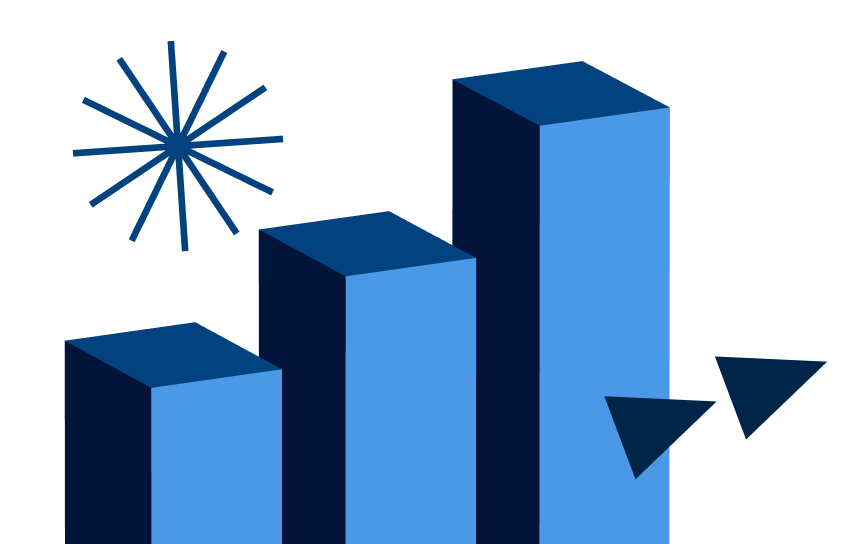Estimated Tax Payments: How They Work, 2025 and 2026 Due Dates
Learn how and when to make estimated tax payments in 2025 or 2026, and learn whether to worry about them in the first place.

Many, or all, of the products featured on this page are from our advertising partners who compensate us when you take certain actions on our website or click to take an action on their website. However, this does not influence our evaluations. Our opinions are our own. Here is a list of our partners and here's how we make money.
In the U.S., income taxes are collected on an ongoing basis. For many of us, this means that an employer pays federal and state taxes on our behalf by withholding a certain amount from each paycheck. However, if you earn income as a self-employed person or receive certain types of nonwage income, you may need to pay estimated quarterly taxes.
Key Takeaways
Estimated taxes are payments made to the IRS throughout the year on taxable income that is not subject to federal withholding.
Typically, freelancers, those who are self-employed, businesses, and some investors have to pay quarterly taxes. W-2 workers whose tax liability is not fully covered by their withholdings may also need to pay estimated taxes.
In 2025, estimated tax payments were due April 15, June 16 and Sept. 15. The final quarterly payment is due in January 2026. In 2026, estimated tax payments are due April 15, June 15 and Sept. 15. The final quarterly payment is due in January 2027.
What are estimated tax payments?
Estimated tax payments are taxes paid to the IRS throughout the year on earnings that are not subject to federal tax withholding. This can include self-employment or freelancer earnings, or income you've made on the side, such as dividends, realized capital gains, prizes and other earnings.
You may also have to make estimated tax payments if you are a W-2 employee, but the tax taken out of your paycheck doesn’t fully cover your tax bill. The amount of money withheld from your paycheck largely depends on the information you provided to your employer on your W-4.
The more you earn, the more complex your taxes become. Learn the 10 traps to dodge.

on NerdWallet Wealth Partners' site. For informational purposes only. NerdWallet Wealth Partners does not provide tax or legal advice.
Who should pay estimated taxes?
People who generally may have estimated tax payment obligations are 1099 workers, W-2 workers who are not withholding enough to cover their tax bill, businesses and some investors.
People who aren't having enough withheld. The IRS says you need to pay estimated quarterly taxes if you expect:
You'll owe $1,000 or more in federal income taxes this year, even after accounting for your withholding and refundable credits.
Your withholding and refundable credits will cover less than 90% of your tax liability for this year, or 100% of your liability last year, whichever is smaller. The threshold is 110% if your adjusted gross income last year was more than $150,000, or $75,000 for married filing separately.
Self-employed people. Independent contractors, freelancers, and people with side gigs who expect to owe $1,000 or more in taxes are prime candidates for estimated quarterly taxes. That’s because no tax is automatically withheld on their income.
Businesses. Corporations may also need to make estimated income tax payments if they'll owe at least $500 for the tax year.
Landlords and investors (maybe). People with rental income and investments might need to pay estimated quarterly taxes — even if an employer withholds taxes from their regular paychecks. “Those might not always be calculated into their withholding amount, and then they come up short and end up having to pay an estimated tax penalty and don't even know what estimated taxes are,” says Thomas Mangold, a CPA in Austin, Texas.
» MORE: How to find a CPA near you
According to the IRS, you don’t have to make estimated tax payments if you’re a U.S. citizen or resident alien who had no tax liability for the previous full tax year.
When are estimated tax payments made?
Estimated tax payments should be made as income is earned, with the IRS collecting them quarterly. These dates don’t coincide with regular calendar quarters, though. Instead, they are due in January, April, June and September.
You can also make payments more often if you like, says Bess Kane, a CPA in San Mateo, California.
“I think it's easier to make 12 smaller payments than four larger payments," says Kane. "If you owe $1,200 for the year, I would rather pay $100 a month than $300 four times a year. And if we're talking bigger numbers, it gets pretty extreme.”
Estimated tax payment due dates for 2025
In 2025, estimated tax payments were due April 15, June 16 and Sept. 15. The final due date is Jan. 15, 2026, which applies to income earned in the fourth quarter of 2025.
If you earned income during this period | Estimated tax payment deadline |
|---|---|
Jan. 1 – March 31, 2025. | April 15, 2025. |
April 1 – May 31, 2025. | June 16, 2025. |
June 1 – Aug. 31, 2025. | Sept. 15, 2025. |
Sept. 1 - Dec. 31, 2025. | Jan. 15, 2026. |
Estimated tax payment due dates for 2026
In 2026, estimated tax payments are due April 15, June 16 and Sept. 15. The final due date is Jan. 15, 2027, which applies to income earned in the fourth quarter of 2026.
If you earned income during this period | Estimated tax payment deadline |
|---|---|
Jan. 1 – March 31, 2026. | April 15, 2026. |
April 1 – May 31, 2026. | June 15, 2026. |
June 1 – Aug. 31, 2026. | Sept. 15, 2026. |
Sept. 1 - Dec. 31, 2026. | Jan. 15, 2027. |
Certain states may also require you to pay estimated taxes. Check your state tax department's website for details, as state deadlines and rules may differ from the federal deadlines and rules.
How to calculate estimated taxes
There's more than one way. Which method makes more sense for you depends on how confident you are about your projected annual income and tax bill.
Estimate based on prior-year taxes ↩️
You can estimate the amount you’ll owe for the year, then send one-fourth of that to the IRS. For instance, if you think you’ll owe $10,000 for the year, you'd send $2,500 each quarter. This may work best for people whose income is pretty much the same throughout the year, or for people who have a good idea of what their income is going to be.
Annualize 🗓️
Another method is to estimate your annual tax liability based on what you’ve already earned during the year. This is often better for people whose income varies. Essentially, you estimate your tax bill at the end of each quarter based on a reasonable expectation of your income and deductions so far this year. The IRS has worksheets to help you do the math.
Either way, you'll use IRS Form 1040-ES to show your income estimate and project your tax liability. IRS Publication 505 has all the rules and details, and good tax software will help you fill out the form and do the math.
If it turns out that you overestimated or underestimated your earnings, you can complete another Form 1040-ES and refigure your estimated tax for the next quarter. When you file your annual return, you’ll likely need to attach an extra form — IRS Form 2210 — to explain why you didn’t send equal payments. If you paid too much, you can get a refund or apply the overage as a credit toward future payments.
The calculations can get complicated quickly, so it’s a good idea to consult with a financial advisor or a qualified tax preparer if you have questions. Plus, there are special rules for farmers, fishermen and certain household employers.
How to pay quarterly estimated taxes
There are several ways you can pay your estimated tax payments, including:
Your online IRS account.
The IRS2Go app.
IRS Direct Pay.
The U.S. Treasury’s Electronic Federal Tax Payment System.
By debit or credit card (additional fees apply).
Pay in cash at certain IRS retail partners.
You can also mail your estimated tax payments with IRS Form 1040-ES using a payment voucher, but the IRS highly encourages taxpayers to consider electronic methods of payment.
Frequently asked questions
Can you pay estimated taxes at any time?
Estimated taxes are due as income is earned, and the IRS sets quarterly deadlines for their collection. You can opt to send four payments per year following the IRS schedule or pay in smaller increments more frequently — just make sure you’re covering your tax liability for each quarter to avoid underpayment penalties.
» Can't afford your tax bill? Learn about IRS payment plans and how to set one up.
What happens if I forget to pay my quarterly taxes?
The IRS will charge penalties if you don’t pay enough tax throughout the year. The IRS can charge you a penalty for late or inadequate payments, even if you're due a refund when you file your tax return. However, it might give you a break on penalties if:
You were a victim of a casualty, disaster or other unusual circumstance, or
You’re at least 62, retired or became disabled this year or last year, and your underpayment was due to “reasonable cause” rather than “willful neglect.”
How can I make paying estimated taxes easier?
If you're married to someone who has taxes automatically taken out of their paycheck, they may have enough taxes withheld to cover both of you, Kane explains.
Revisit your partner's Form W-4, which instructs employers how much tax to withhold from each paycheck. You can change your W-4 at any time. If you’re getting a pension or annuity, use Form W-4P.
The more you earn, the more complex your taxes become. Learn the 10 traps to dodge.

on NerdWallet Wealth Partners' site. For informational purposes only. NerdWallet Wealth Partners does not provide tax or legal advice.
More about estimated taxes
More about estimated taxes











